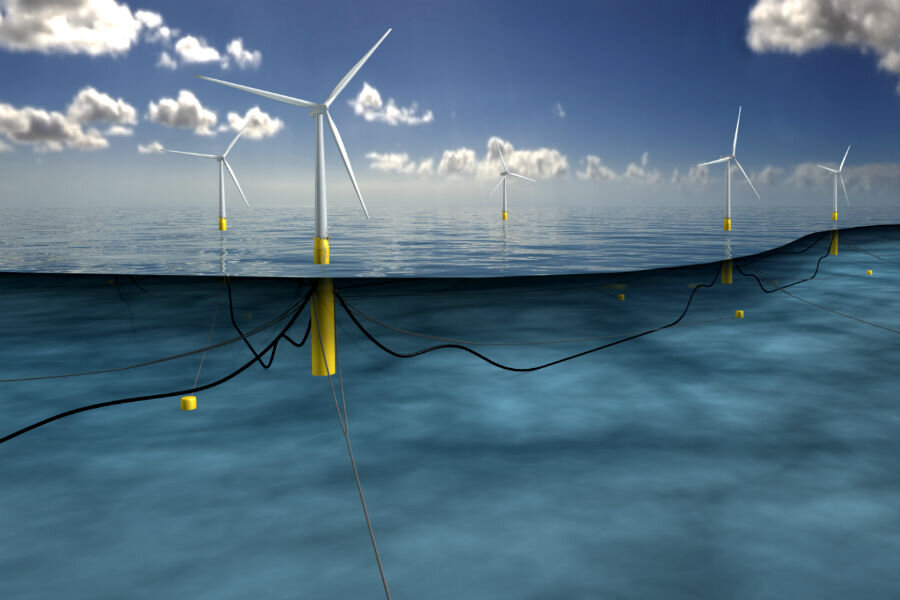Are floating wind turbines the future of clean energy?
Loading...
A Norwegian oil and gas company has been given the go-ahead to harness the record-breaking winds off of Scotland's shores.
Using a different sort of Scandinavian windmill, Hywind, a project of Norway's Statoil, got permission from the Scottish government to build the world's largest floating wind farm.
The project represents the latest foray by a fossil fuel company into the renewable energy market. As oil becomes more expensive to locate, and as gas prices slump, oil and gas are testing the waters of solar and wind.
Hywind turbines introduce a potentially exciting innovation in the field of wind energy: unlike typical turbines, the five being put in place by Statoil will "float," while secured to the seabed by a tripod-style mooring-and-anchoring system. The turbines will be connected by cables, with one cable running electricity from the wind farm to the shore 25 kilometers away at Peterhead, on the northeast coast of Scotland.
William Pentland, an energy writer at Forbes, decsribes the floating wind turbines as being "at the bleeding edge of offshore wind technology" but it does not stand to become competitive to other renewable energy sources "for at least a decade".
With the five turbines each generating up to six megawatts, Hywind will be the world's largest floating farm, but it won't be the first. Portugal and Norway each have one floating turbine, and France opened an invitation in August for proposals to build a floating wind farm at utility scale - potentially the first offshore wind for France. Japan also has a seven-megawatt floating wind turbine 12 miles off the coast of Fukushima, Think Progress reports.
If successful, the pilot project will have a generating capacity of 135GWh of electricity annually, with the potential to "power up to 19,900 houses," according to a statement from the Scottish government. The potential power would be roughly 12 percent cheaper to generate compared to the global utility average, according to independent environmental analysts at the UK-based Carbon Trust.
The shores off northern Scotland are a prime wind farm site, the past two years have broken high-wind records in the country.
“The momentum is building around the potential for floating offshore wind technology to unlock deeper water sites," Deputy First Minister of Scotland John Swinney said following the approval of Hywind. "The ability to leverage existing infrastructure and supply chain capabilities from the offshore oil and gas industry create the ideal conditions to position Scotland as a world leader in floating wind technology.”
Last year, Scotland generated about 50% of its energy consumption through renewables; Germany hit a one-day record of energy generation with 78% of the country’s power needs. On its "best day", Denmark has hit 140 percent, Quartz reports.
Construction is scheduled to begin on the project in early 2016.






